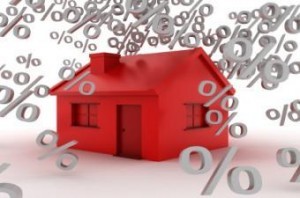 For the first time in a year and only the second time in a decade, the Federal Open Market Committee (FOMC), the policy making arm of the Federal Reserve, voted on Wednesday in its eighth and final meeting of the year to raise the federal funds target rate by 25 basis points up to the 0.50 to 0.75 percent range.
For the first time in a year and only the second time in a decade, the Federal Open Market Committee (FOMC), the policy making arm of the Federal Reserve, voted on Wednesday in its eighth and final meeting of the year to raise the federal funds target rate by 25 basis points up to the 0.50 to 0.75 percent range.
With the labor market widely considered to be at full employment and the unemployment rate at a post-recession low of 4.6 percent, according to the November Employment Summary from the Bureau of Labor Statistics, members of the FOMC felt the time was appropriate for a rate hike.
“In view of realized and expected labor market conditions and inflation, the Committee decided to raise the target range for the federal funds rate to 1/2 to 3/4 percent,” the FOMC said in its statement. “The stance of monetary policy remains accommodative, thereby supporting some further strengthening in labor market conditions and a return to 2 percent inflation.”
Analysts in the housing industry have been speculating for weeks as to what the effect of a Fed rate hike would be on mortgage interest rates and overall affordability. In the month prior to the Fed voting to raise the federal funds target rate, the average 30-year FRM rose by more than 50 basis points to a level above 4 percent for the first time in more than a year.
“While the Fed’s hike of 0.25 point in short-term interest rates may trickle down to long-term rate products like 30-year mortgages, the more immediate impact will be felt by borrowers with variable-rate mortgages and home equity lines of credit who can expect an increase in their payments at their next rate reset,” said Tim Manni, mortgage expert at NerdWallet. “Homebuyers shouldn’t be particularly concerned with today’s Fed move. Even with rates hovering over 4 percent, they’re still historically low. Most market observers are expecting a gradual rise in home loan rates in the near term, anticipating mortgage rates to stay under 5 percent through 2017. Of course, that’s barring any unforeseen economic event.”
Mark Fleming, Chief Economist with First American, estimated that the 25-basis point increase in the federal funds target rate will result in a decline in existing-home sales down to a seasonally-adjusted annual rate of 5.55 million—in October, National Association of Realtors reported an annual rate of 5.60 million for existing-home sales, highest in more than nine years—and that the year-over-year growth rate for nominal price appreciation will fall to 4.0 percent. Also, First American’s Real House Price Index (RHPI), which adjusts prices for purchasing power by considering how interest rates and income levels impact the amount a consumer can borrow, estimates that real house prices will increase by 4.4 percent by December 2017.
“In addition to the impact on existing-home sales and house prices, first-time home buyers will feel the most impact of the rate increase,” Fleming said. “In short, real house prices provide a more relevant way to compare changes in affordability over time because they are adjusted for differences in home buyers’ income and the impact of interest rates on financing costs. Increases in real house prices decrease consumer house-buying power and, therefore, affordability by the same amount.”
Realtor.com Chief Economist Jonathan Smoke stated, “Today’s Fed announcement is going to have the greatest impact on first time home buyers as they consider their monthly payment budgets. Rates will likely stay the same until about March so buyers considering a purchase in 2017 may want to consider getting into the market now. The Fed—and financial markets—will have to wait to see what comes of U.S. fiscal policies in the weeks and months ahead and how that impacts the economy and the potential for more inflation. Signs point to the Fed raising rates at least three times next year, and just like we’ve seen in the last month, mortgage rates will likely move proportionately in anticipation of those increases, as clear data emerges about stronger economic growth and inflation.”
National Association of Federal Credit Unions (NAFCU) Chief Economist Curt Long said that overall, the effect of the 25 basis point on U.S. households should be minimal, but at the same time, “for the millions of savers living on fixed incomes it surely comes as a relief, especially if it is accompanied by a forecast for more in 2017. To that end, the committee’s economic projections may hold more interest than the statement itself,” said Long. “For typical Main Street Americans, the move serves as a reminder to review the rates on their savings and borrowings and to shop around. They may find that even in a low-rate environment there are institutions willing to provide superior rates and higher-quality service than the big Wall Street banks.”
Long continued, “The Fed will not make any assumptions about President-elect Trump’s economic agenda. A large spending bill accompanied by tax cuts certainly has the potential to increase growth and inflation, paving the way for faster rate normalization in the coming years. But the Fed will stick to its wait-and-see approach.”

 DSNews The homepage of the servicing industry
DSNews The homepage of the servicing industry










